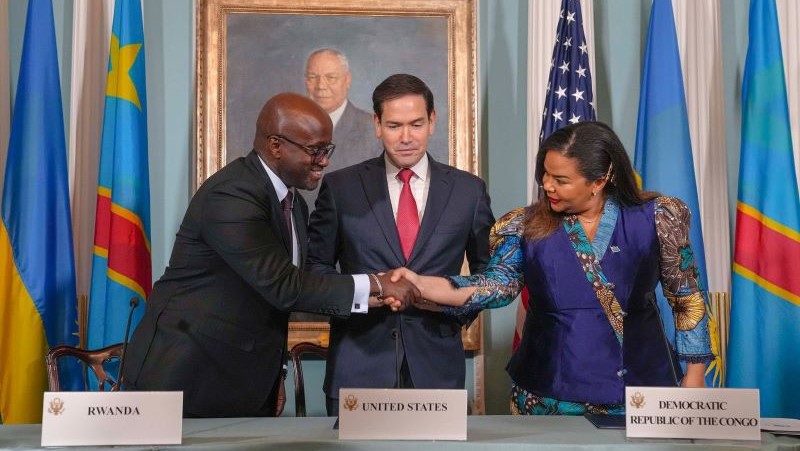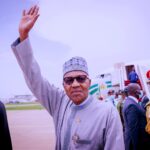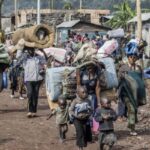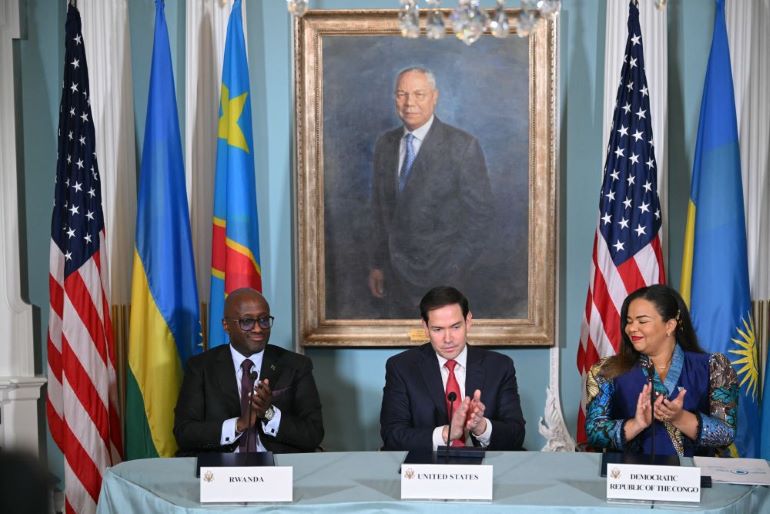The Democratic Republic of the Congo (DRC) and the Republic of Rwanda recently signed a comprehensive peace agreement that sets a clear path toward stability, mutual respect, and economic cooperation.
This historic accord marks a significant step forward in addressing longstanding grievances, halting hostilities, and rebuilding trust between the two nations.
The agreement reaffirms both countries’ commitment to the principles outlined in the Declaration signed on April 25, 2025, emphasizing mutual respect for sovereignty, national unity, and territorial integrity while rejecting military solutions to political disputes.
Instead, it underscores the importance of negotiation, diplomacy, and peaceful resolution, core values reflected in the Constitutive Act of the African Union, the UN Charter, and UN Security Council Resolution 2773.
A central component of the peace deal is the commitment to uphold each other’s territorial integrity.
Rwanda has agreed to lift defensive military measures, while the DRC will move forward with the neutralization of the FDLR, as outlined in the October 31, 2024 Concept of Operations (CONOPS).
Both countries are bound by this plan, which emerged from the Luanda Process and reflects regional consensus on how to address armed group threats without violating national borders.
“The Parties agree not to engage in, support, or condone any military incursions or other acts, whether direct or indirect, that threaten the peace and security,” the agreement states.
This clause is a firm rejection of any form of cross-border aggression or proxy warfare, a critical source of instability in eastern Congo for years.
The agreement also calls for the dismantling of all support to non-state armed groups, with both governments committing to taking “any and all measures necessary” to prevent their territories from being used to plan, support, or finance hostile activities.
This applies without geographical restriction, reinforcing that hostile actions are prohibited regardless of where they originate.
To further support peace efforts, the DRC and Rwanda pledge to back the Doha-based negotiations between the DRC and the M23 rebel group under Qatari mediation.
These talks, combined with a robust framework for disarmament and reintegration, are seen as crucial for ending the armed conflict that has displaced hundreds of thousands.
Reintegration of former combatants will be strict, based on moral and legal standards, and will exclude individuals implicated in serious human rights violations.
In terms of security cooperation, the agreement establishes a Joint Security Coordination Mechanism. This body, to be launched within 30 days, will facilitate transparency in military operations and ensure both countries collaborate on neutralizing threats.
Its objectives include ending all support for the FDLR and associated groups, protecting civilians, and continuing previous bilateral successes in targeted, intelligence-led security operations.
Humanitarian concerns are also addressed. The agreement commits both countries to creating safe conditions for the return of refugees and internally displaced persons (IDPs).
These efforts will be coordinated with territorial and customary authorities, supported by UN agencies and other international actors. Humanitarian access will be guaranteed to ensure emergency relief reaches vulnerable communities, particularly in conflict-affected areas of eastern DRC.
The role of the United Nations Organization Stabilization Mission in the Democratic Republic of the Congo (MONUSCO) is clearly recognized. Both parties commit to facilitating its operations and ensuring the safety and freedom of movement of UN personnel.
MONUSCO remains a key pillar of international support in stabilizing eastern Congo and is empowered under UN Security Council Resolution 2765 (2024) and Resolution 2773 (2025) to protect civilians and monitor the peace process.
Beyond peace and security, the agreement looks toward a future of regional economic integration.
Within three months, both countries will launch a new framework that enhances trade, strengthens supply chain oversight, and fosters responsible investment in natural resources.
This initiative will focus on areas such as hydropower, mineral value chains, and joint resource management in Lake Kivu. Oversight mechanisms will be put in place to fight corruption and ensure transparency, with potential partnerships from the U.S. government and private investors.
To ensure compliance, the Parties will establish a Joint Oversight Committee (JOC), which will include representatives from both governments, the African Union, the State of Qatar, and the United States.
The committee will receive and mediate complaints, oversee implementation, and resolve disputes. The first JOC meeting is expected to take place within 45 days, potentially hosted in Washington, D.C.
While the agreement is indefinite in duration, it may be amended or terminated by mutual consent or upon six months’ written notice by either party. Importantly, this deal does not impose any legal obligations on third-party members of the oversight committee.
This peace agreement presents a vision of transformation that aims to reverse years of mistrust and conflict by promoting cooperation in security, humanitarian action, and economic growth.









